Ancient Antarctic sea monster may have laid this football-size egg
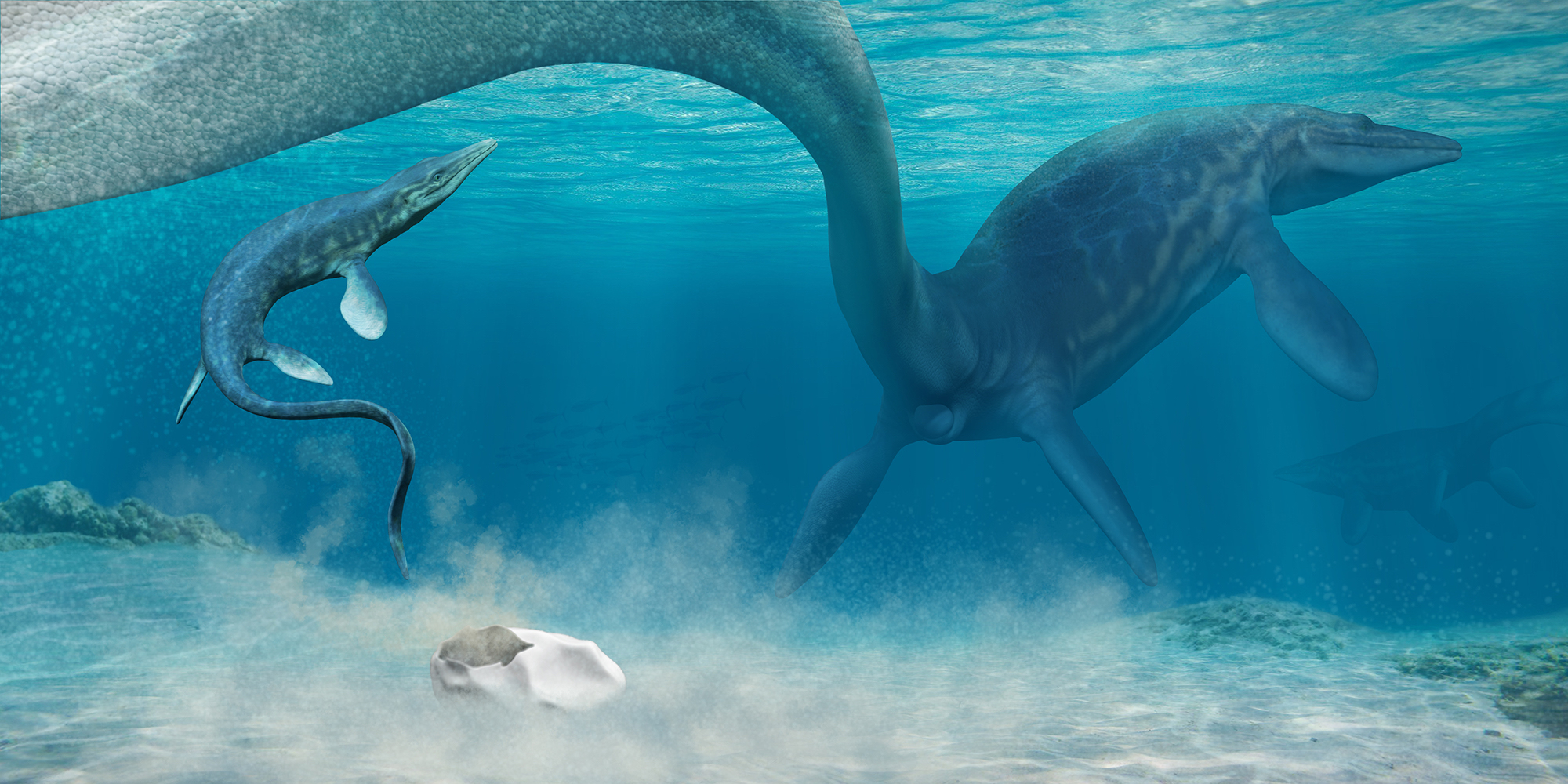
A 68 million-year-old egg the size of a football — the largest soft-shelled egg on record and the second largest egg ever discovered — might belong to a mosasaur, a reptilian sea monster that lived during the age of dinosaurs in what is now Antarctica, a new study finds.
If true, this would be the only mosasaur egg on record, according to the study, published online yesterday (June 17) in the journal Nature.
"There's no known egg like this," study senior researcher Julia Clarke, a professor of vertebrate paleontology at the University of Texas at Austin (UT Austin), told Live Science. "This egg is exceptional in both its size and its structure."
Related: Photos: Fossilized dino embryo is new oviraptorosaur species
Chilean researchers found the eggs-traordinary fossil in a seasonal stream in 2011, about 660 feet (200 meters) away from the remains of 33-foot-long (10 m) Kaikaifilu hervei, a large mosasaur unearthed on Seymour Island, Antarctica, said study co-researcher David Rubilar-Rogers, a paleontologist at the National Museum of Natural History (MNHN) in Santiago, Chile. Despite the egg's proximity to the mosasaur, however, "the identity of the animal that laid the egg is unknown," the researchers wrote in the study.
"Although we weren't clear on what it was, the strangeness of its shape was enough to collect it and take it to camp," Rubilar-Rogers told Live Science in an email translated from Spanish. The fossil was so bizarre, the team called it "The Thing," after the 1982 sci-fi movie based in Antarctica, which the paleontologists bravely watched when they were stuck in their tents due to bad weather, study co-researcher Rodrigo Otero, a paleontologist at the University of Chile in Santiago, told Live Science.
The Thing sat in the MNHN until 2018, when Clarke visited and struck up a conversation with Rubilar-Rogers about how Antarctica didn't have any known fossilized eggs. On a hunch, he showed her The Thing. "To me, it looked exactly like a deflated football," Clarke recalled.
Sign up for the Live Science daily newsletter now
Get the world’s most fascinating discoveries delivered straight to your inbox.
The following analysis, however, revealed it was an exceptional find. At about 11 inches by 8 inches (29 by 20 centimeters), it's second in size only to the egg of the extinct Madagascan elephant bird (Aepyornis maximus). It's also the only known fossil egg ever found in Antarctica.
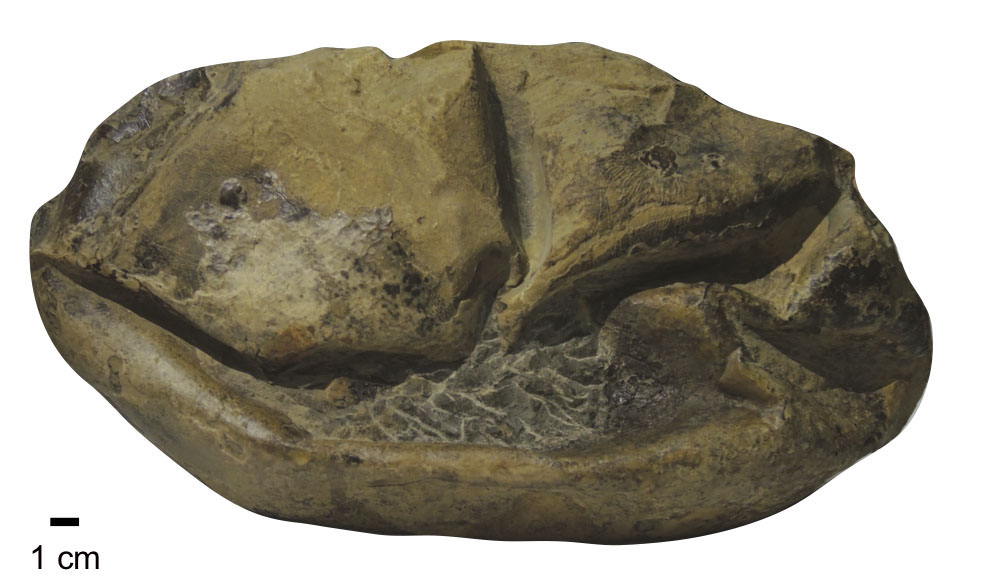
Gallery: An egg, possibly from a mosasaur
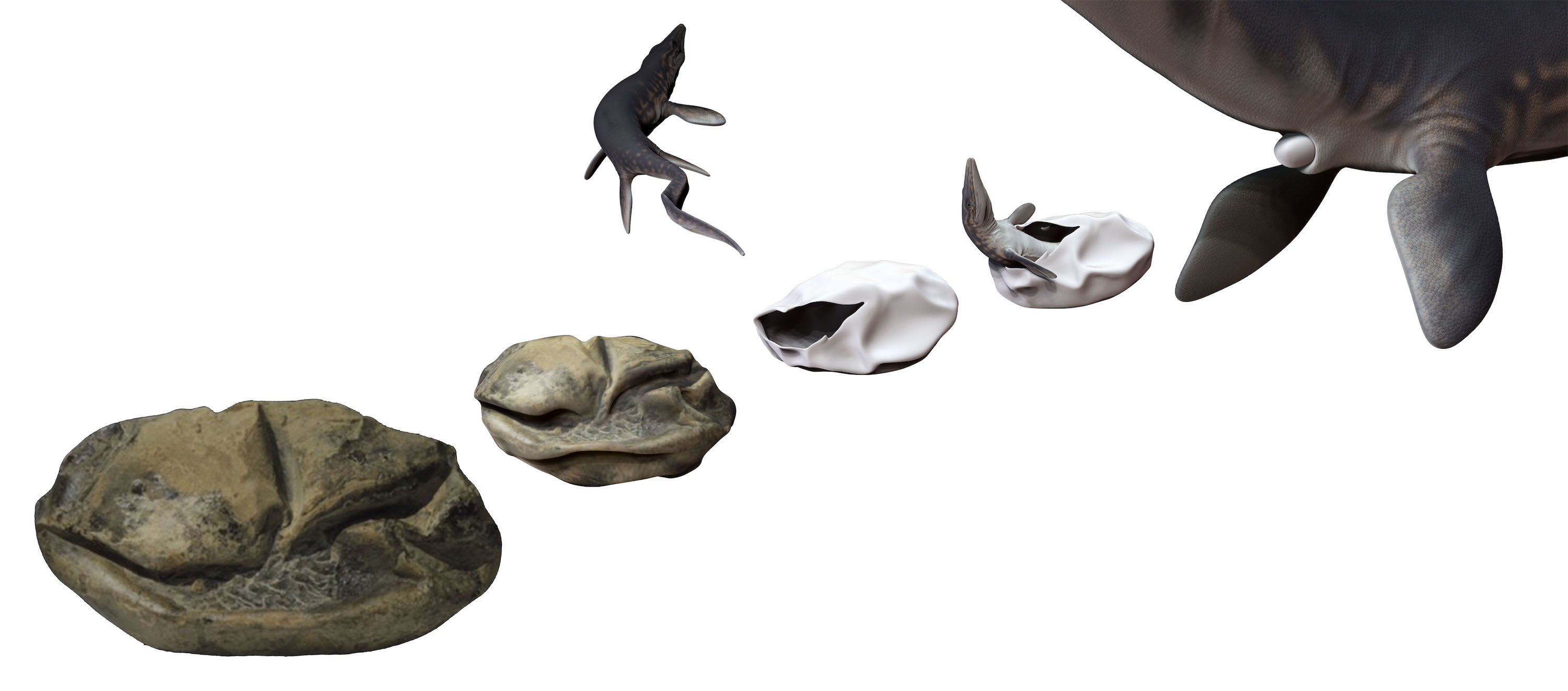
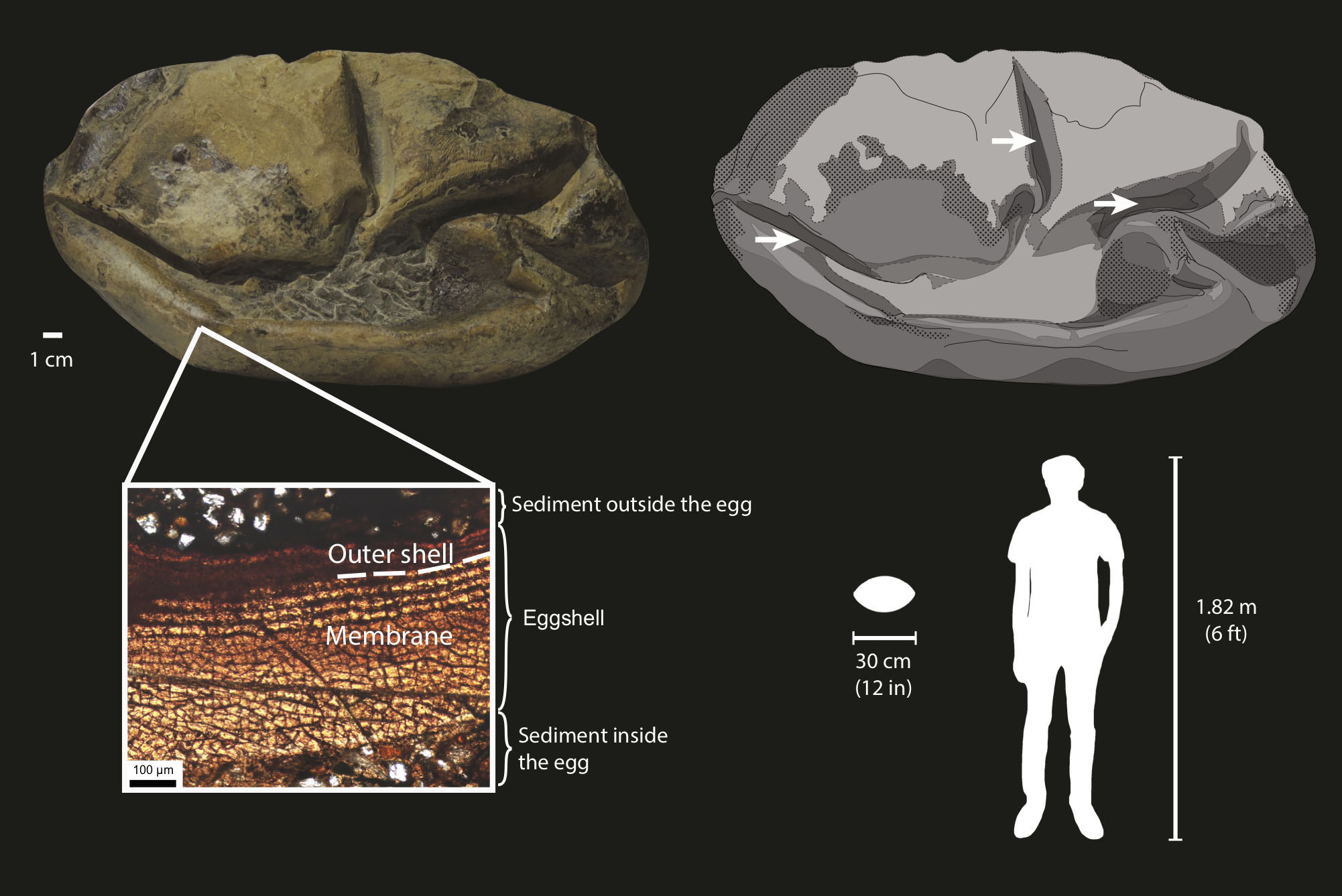
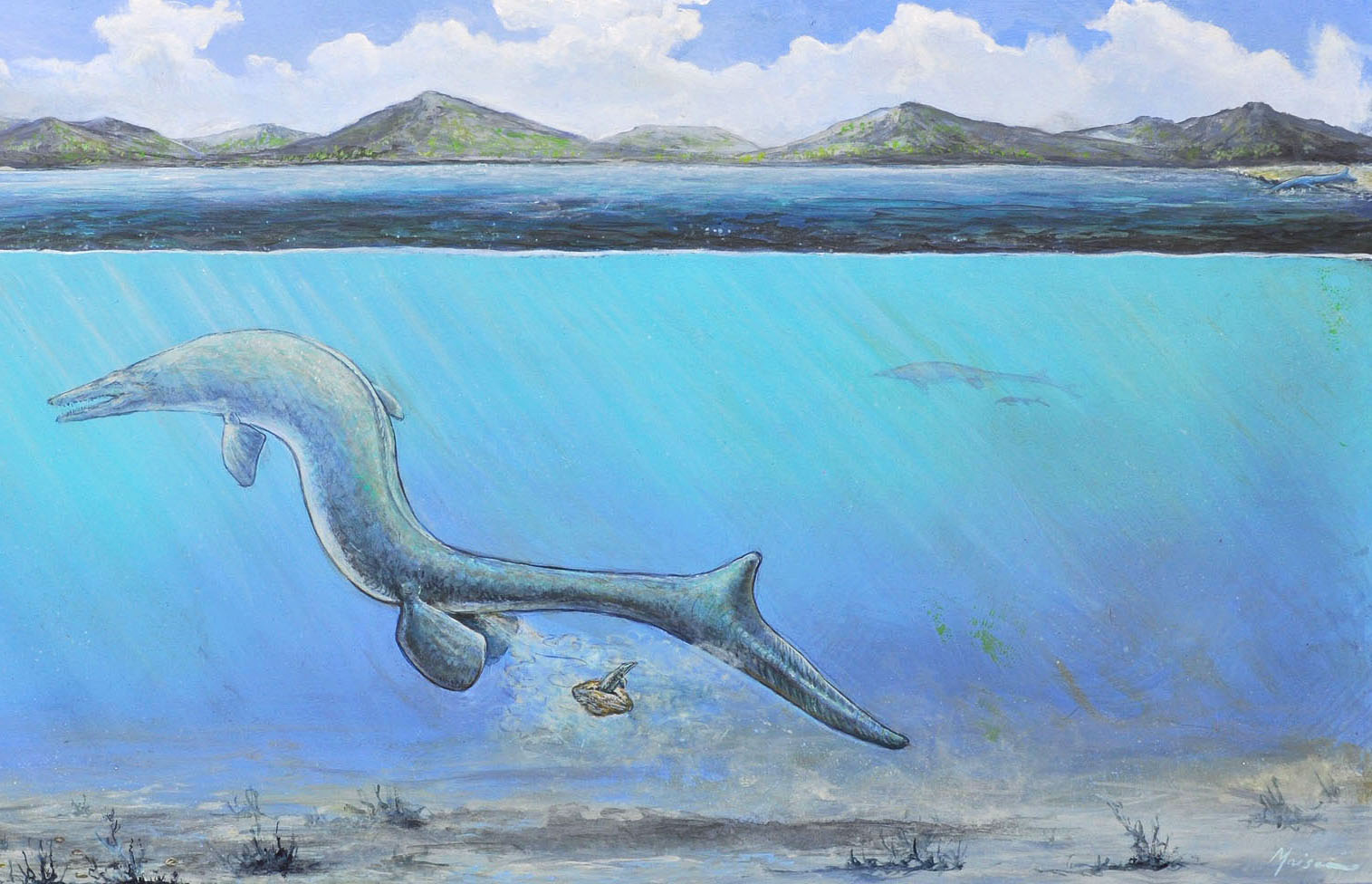
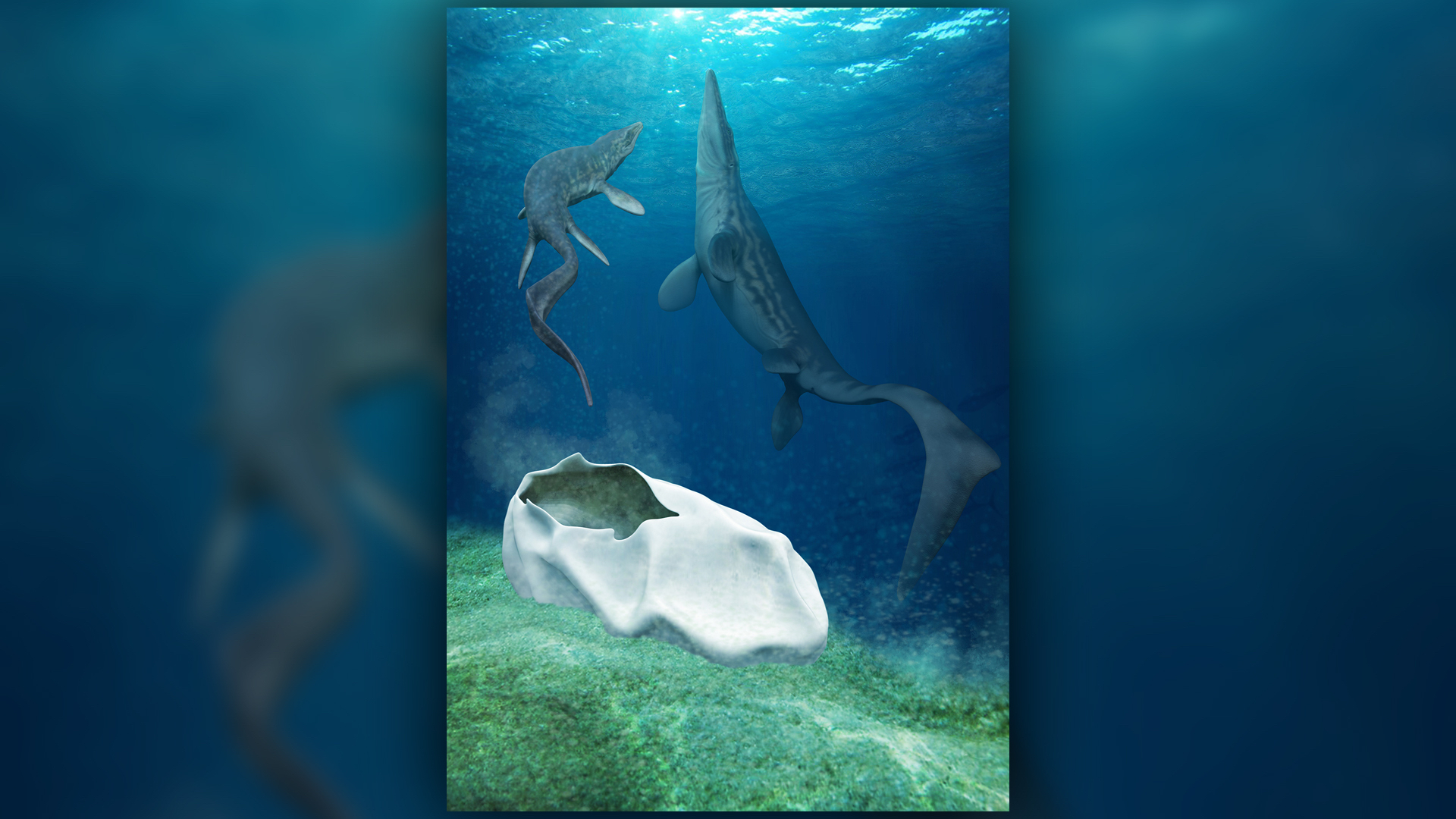
Fossil egg gallery
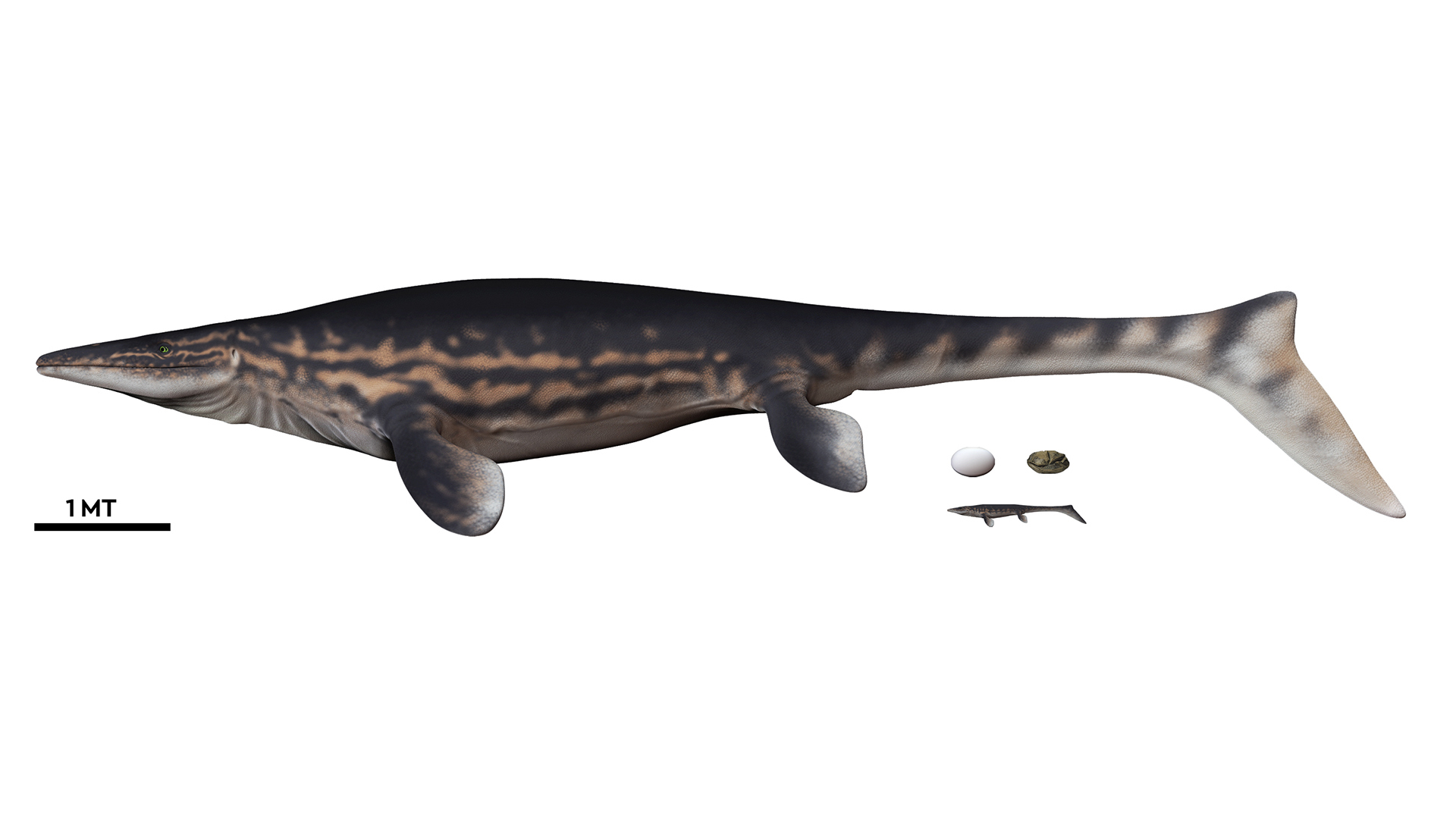
Is it really a mosasaur?
The newfound egg, dubbed Antarcticoolithus bradyi (or "delayed Antarctic stone egg" in Greek), pushes the limits of how large scientists thought soft-shelled eggs could grow. In contrast to the hard-shelled elephant bird's egg — which was five times thicker than this one — A. bradyi has a thin eggshell that lacks pores. These features also set A. bradyi apart from most ancient dinosaur eggs.
"It is from an animal the size of a large dinosaur, but it is completely unlike a dinosaur egg," study lead researcher Lucas Legendre, a postdoctoral researcher at UT Austin's Jackson School of Geosciences, said in a statement. "It is most similar to the eggs of lizards and snakes, but it is from a truly giant relative of these animals."
Like lizards and snakes, mosasaurs fall into the Lepidosauria group. Though the baby that incubated within the egg is long gone (the team did find an ammonite inside of it, however), the team said there are clues that it was a mosasaur. For instance, there aren't any known late Cretaceous Antarctic dinosaurs or pterosaurs large enough to have laid such a huge egg, Clarke said. But the remains of the contemporary K. hervei are nearby.
An analysis of 259 living lepidosaur species and their eggs suggested that A. bradyi belonged to a mother measuring at least 23 feet (7 m) long, not including the tail. It's possible that during the late Cretaceous this area of Antarctica was a nursery, as paleontologists have also found fossils of baby mosasaurs and plesiosaurs there, along with adult remains.
Related: 15 of the Largest Animals of Their Kind on Earth
Dinosaurs laid soft-shelled eggs, too
The soft-shelled egg finding is "pretty spectacular," said Darla Zelenitsky, an assistant professor of dinosaur paleobiology at the University of Calgary in Canada, who wasn't involved in the research. "Soft-shelled eggs consist almost entirely of membranes, so these soft tissues are quite fragile and destructible. Because of this, for many years we thought that fossilization of such eggs was nearly impossible."
Until now, many researchers didn't think that mosasaurs laid eggs, the authors noted. If A. bradyi is a mosasaur egg, it would "represent one of the first known instances of live birth in an ancient, extinct species of the snake and lizard family," Zelenitsky told Live Science in an email.
Zelenitsky is the senior researcher on another study also published in Nature yesterday suggesting that the first dinosaur eggs had soft shells. Their conclusion is based on the discovery of fossilized soft eggshells from the horned dinosaur Protoceratops, which lived during the Cretaceous period, and the Triassic period sauropodomorph Mussaurus.
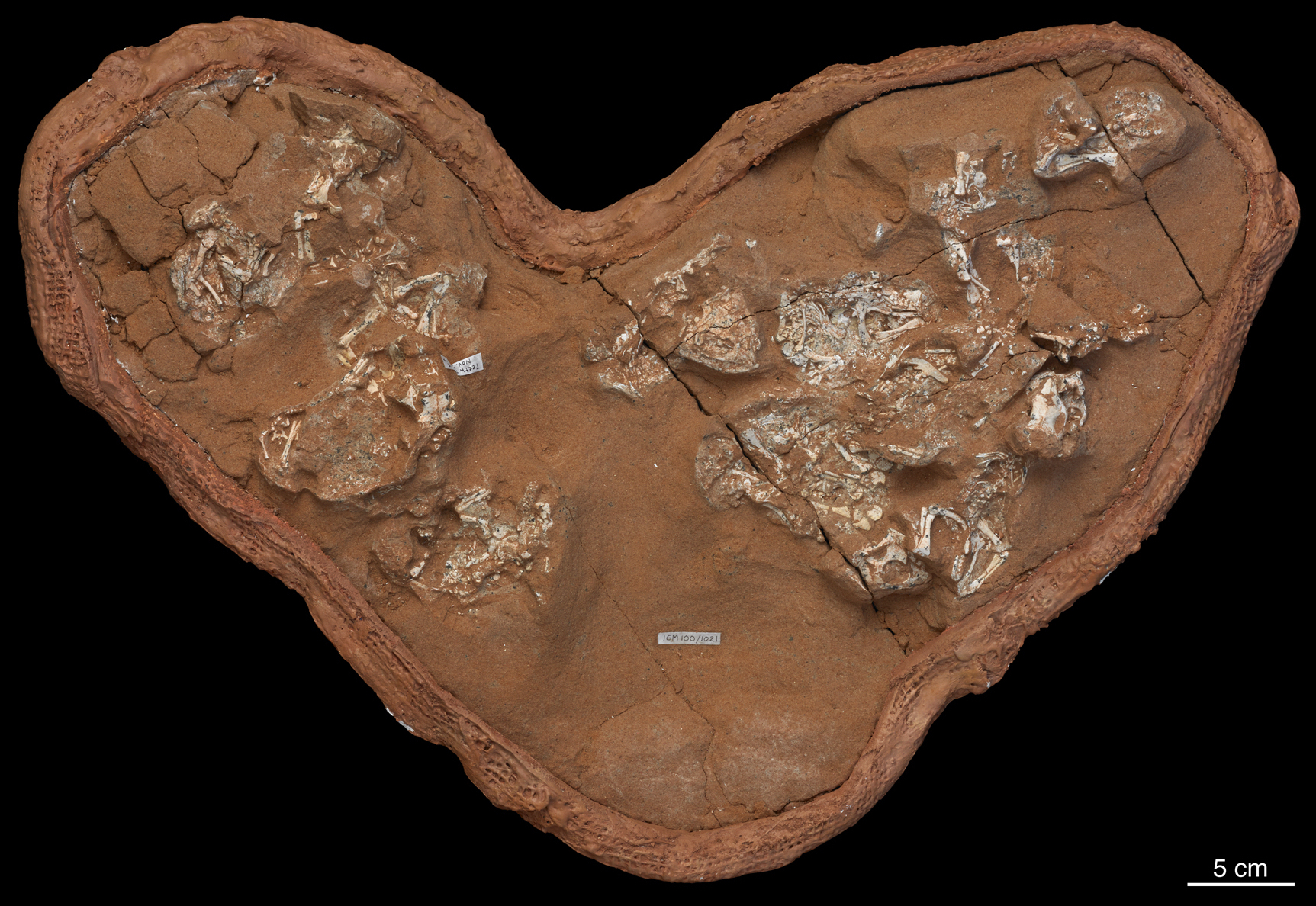
Dinosaur soft-shelled egg gallery
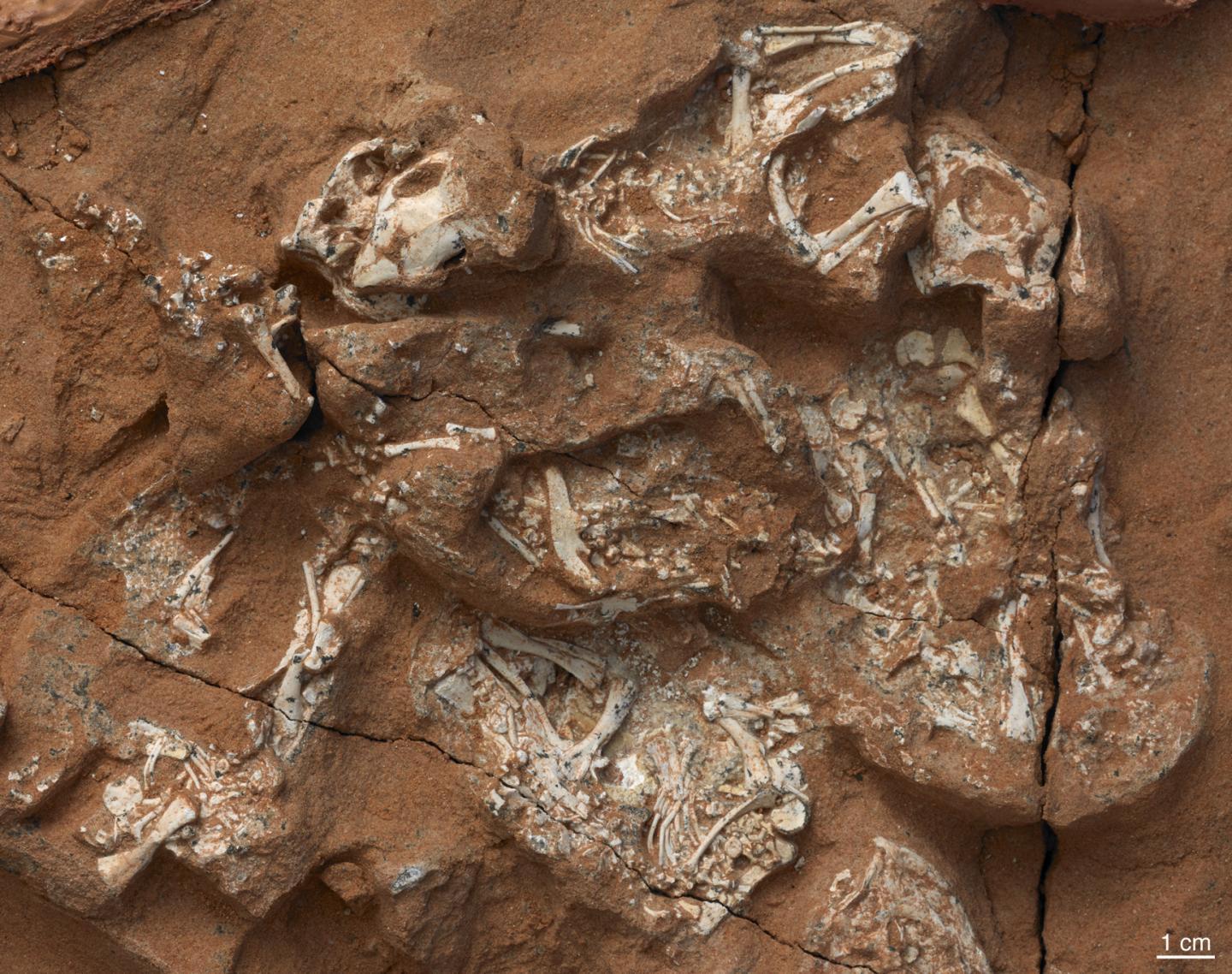
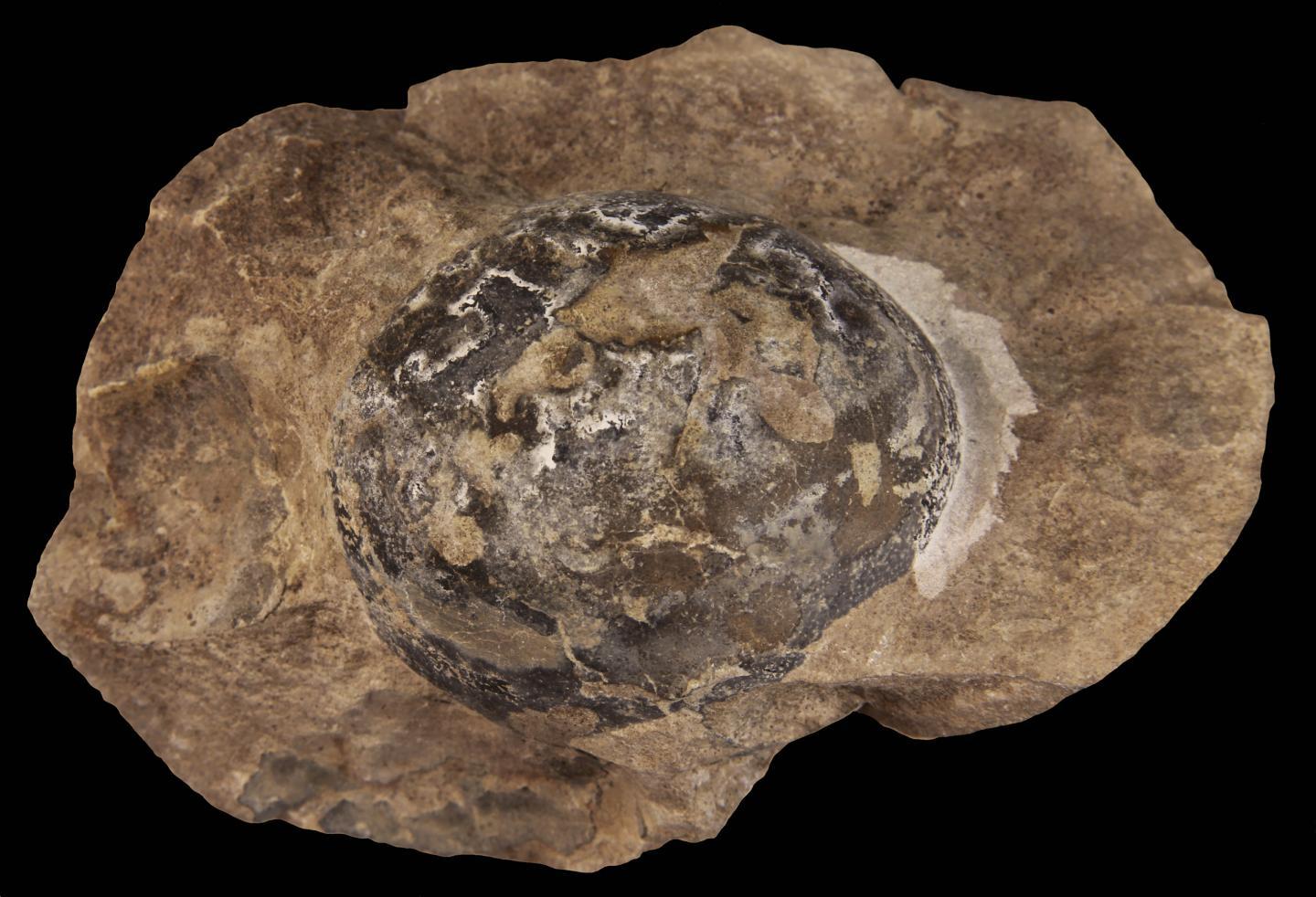
Given that Zelenitsky's study found soft-shelled dinosaur eggs, perhaps A. bradyi actually came from dinosaur eggs laid on land that then washed out to sea, two Swedish researchers wrote in an accompanying opinion piece in Nature.
Zelenitsky, too, thought that "the new egg looks a lot like the soft-shelled eggs of dinosaurs. Perhaps an analysis comparing the soft tissue of A. bradyi with those of other reptile eggs could shed light on what kind of animal laid it, she said.
- Photos: Ancient pterosaur eggs & fossils uncovered in China
- In photos: Spooky deep-sea creatures
- Image gallery: Ancient monsters of the sea
Originally published on Live Science.
OFFER: Save 45% on 'How It Works' 'All About Space' and 'All About History'!
For a limited time, you can take out a digital subscription to any of our best-selling science magazines for just $2.38 per month, or 45% off the standard price for the first three months.

Laura is the archaeology and Life's Little Mysteries editor at Live Science. She also reports on general science, including paleontology. Her work has appeared in The New York Times, Scholastic, Popular Science and Spectrum, a site on autism research. She has won multiple awards from the Society of Professional Journalists and the Washington Newspaper Publishers Association for her reporting at a weekly newspaper near Seattle. Laura holds a bachelor's degree in English literature and psychology from Washington University in St. Louis and a master's degree in science writing from NYU.










